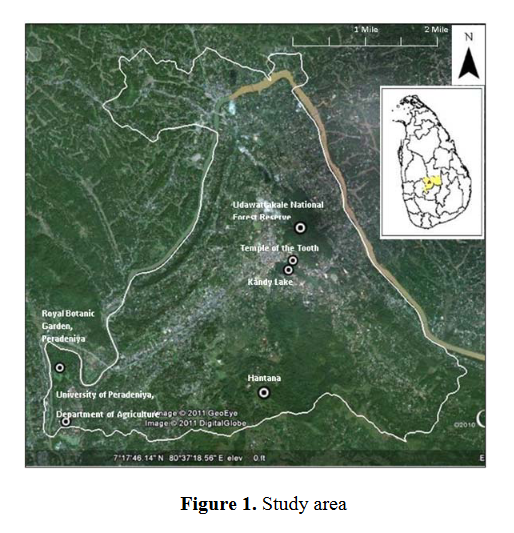Improving Existing Landslide Hazard Zonation Map in KMC Area, Sri Lanka
Keywords:
Buildings, Hazards, Map, Landslide, RoadsAbstract
In Sri Lanka, presently used landslide hazard zonation (LHZ) map which was developed by National Building and Research Organization (NBRO) is based entirely on geological, geomorphological and hydrological factors. As development expands into unstable hill slope areas under the pressures of increasing population and urbanization, human activities such as deforestation or excavation of slopes for road cuts and building sites, etc., have become important triggers for landslide occurrence. The present study was undertaken in highly urbanized Kandy Municipal Council (KMC) area in Sri Lanka. Main objective of the study was to validate the existing LHZ map with current active landslides and the improvement of the LHZ map for further use for management purposes. Validation of the existing LHZ map shows lowest percentage of landslide occurrence in the landslides most likely to occur zone and highest in the landslides are to be expected zone. To evaluate this situation building density and transport lines were used. The relationship between building density and landslide occurrence was 97.1% and the relationship between distance from transport lines and landslide occurrence was 88.3% till 50 m. An improved LHZ map was developed including the effect of building density and distance from transport lines using frequency ratio method and improved LHZ map has an accuracy of 98.5%.
References
Barredol, J. I., Benavides, A., Hervas, J. & Van Westen C. J., (2000). Comparing heuristic landslide hazard assessment techniques using GIS in the Tirajana basin, Gran Canaria Island, Spain. International Journal of Applied Earth Observation and Geoinformation, 2(1), 9-23.
Begueria, S. (2006). Validation and evaluation of predicative models in hazard assessment and risk management. Natural Hazards, 37, 315-329.
Cruden, D. M. (1991). A simple definition of a landslide. Bulletin of the International Association of Engineering Geology, 43, 27-29.
David, J. W., & Paul, F. H. (2000). Mapping landslide susceptibility in Travis County, Texas, USA. Geology
Journal, 51, 245-253.
Gokceoglu, C., & Aksoy, H. (1996). Landslide susceptibility mapping of the slopes in the residual soils of the Mengen region (Turkey) by deterministic stability analyses and image processing techniques. Engineering Geology, 44, 147-161.
Lan, H. X., Zhou, C. H., Wang, L. J., Zhang, H. Y. & Li, R.H. (2004). Landslide hazard spatial analysis and prediction using GIS in the Xiaojiang watershed, unnan, China. Engineering Geology, 76, 109-128.
Lee, S., & Pradhan, B. (2006). Probabilistic landslide hazards and risk mapping on Penang Island, Malaysia. Earth System Science, 115(6), 661-672.
Oztekin, B. & Topal, T. (2005). GIS-based detachment susceptibility analyses of a cut slope in limestone, Ankara–Turkey. Environmental Geology, 49, 124-132.
Saha, A. K., Gupta, R. P. & Arora, M. K. (2002). GIS-based Landslide Hazard Zonation in the Bhagirathi (Ganga) valley, Himalayas. International journal of Remote Sensing, 23(2), 357-369.
Sarkar. S, Kanungo, D. P., Patra, A. K. & Pushpendra, K. (2007). GIS based spatial data analysis for landslide susceptibility mapping. Journal of Mountain Science,5(1), 52-62.
Van Westen, C. J., Rengers, N., Terlien, M. T. J. & Soeters, R. (1997). Prediction of the occurrence of slope instability phenomena through GIS-based hazard zonation. Geologische Rundschau, 86(2), 404-414.













